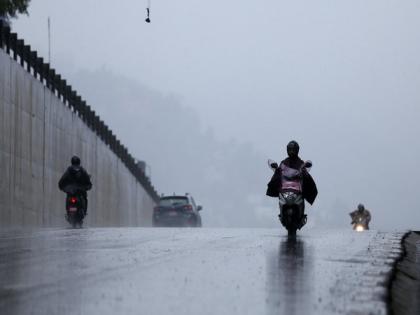Monsoon arrives 15 days early in Nepal
By ANI | Updated: May 30, 2025 22:18 IST2025-05-30T22:11:15+5:302025-05-30T22:18:14+5:30
Kathmandu [Nepal], May 30 : The monsoon climatic effects have entered Nepal 15 days earlier than normal timings as ...

Monsoon arrives 15 days early in Nepal
Kathmandu [Nepal], May 30 : The monsoon climatic effects have entered Nepal 15 days earlier than normal timings as the nation is expected to have above-average rainfall this year.
According to the weather bulletin of the Meteorological Forecasting Division under the Department of Hydrology and Meteorology, monsoon clouds have spread across most districts of Koshi province and have caused light to moderate rainfall.
Usually, the monsoon clouds start entering Nepal from June 13, but this time, they entered a fortnight earlier than usual. They typically last until the end of September.
"This year, monsoon clouds entered the country 15 days before the normal onset date," the met office announced in the bulletin issued on Friday. Further adding, "It will take a few days for the monsoon clouds to reach the rest of the places. Impacts of western winds and local winds continued in the rest of the areas."
The Met Office has predicted that Nepal is likely to witness above-normal monsoon rainfall this year. Nepal, on an annual basis during the monsoon season, faces disasters such as floods, landslides, and inundation, resulting in loss of lives and properties.
Continuous downpour over three days last year resulted in widespread damage to properties as well as loss of about 200 lives due to the monsoon-induced disaster.
As the Himalayan Nation is bracing for above average rainfall this year, the National Disaster Risk Reduction and Management Authority (NDRRMA) has predicted that around two million (19,97,731) people from 4,57145 households could be affected by monsoon-related disasters.
According to the projection, the districts of Lumbini province will be affected the most in the monsoon, 5,23,656 people from 119,830 households will be affected. This is followed by the Bagmati327, 376 people from 74,914 households, Gandaki287,107 people from 65,699 households, Koshi 275,867 people from 63,127 households, Madhesh228,687 people from 52,331 households, Sudurpaschim227,730 people from 52,112 households, and Karnali province127,308 people from 29,132 households.
Disclaimer: This post has been auto-published from an agency feed without any modifications to the text and has not been reviewed by an editor
Open in app